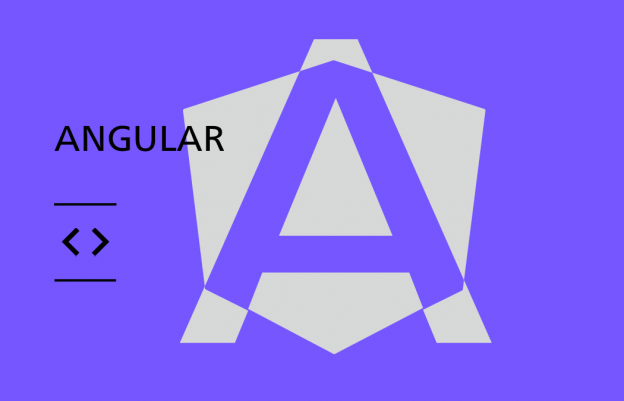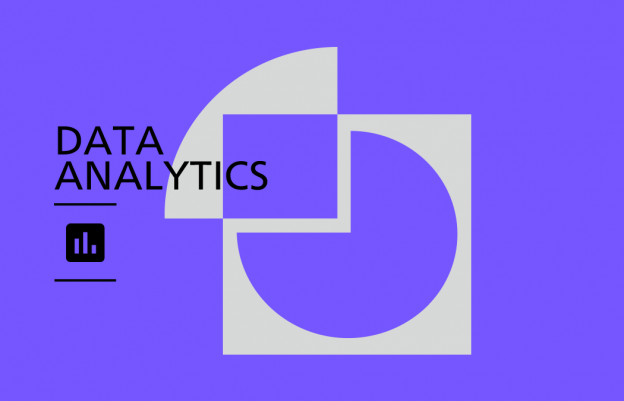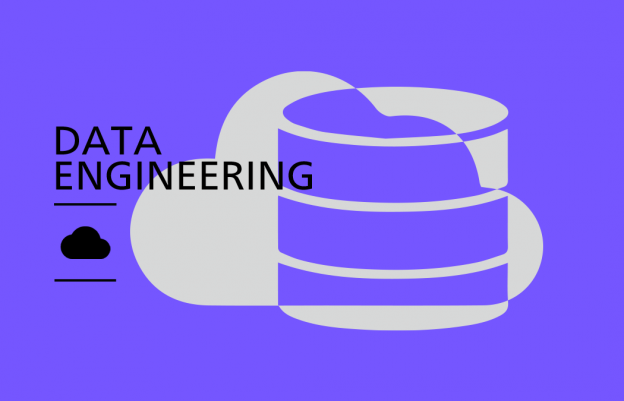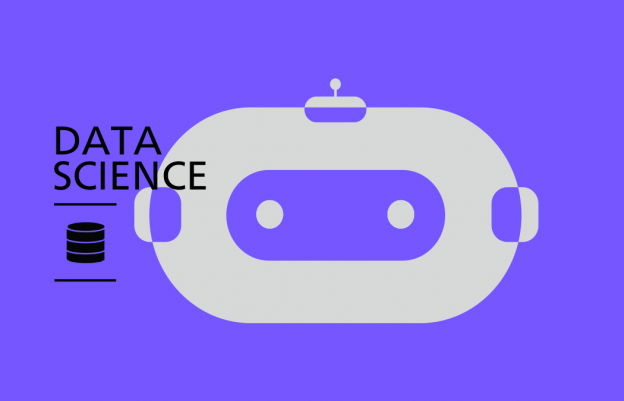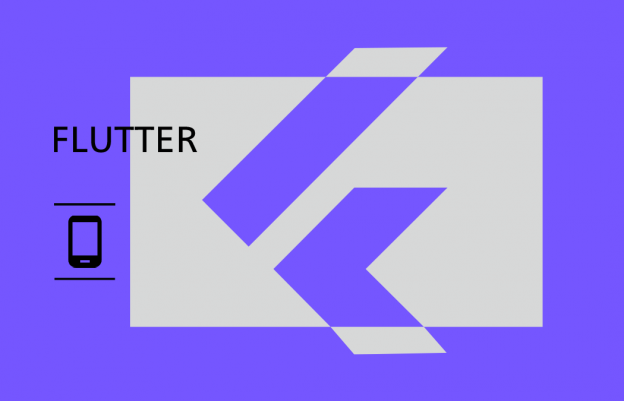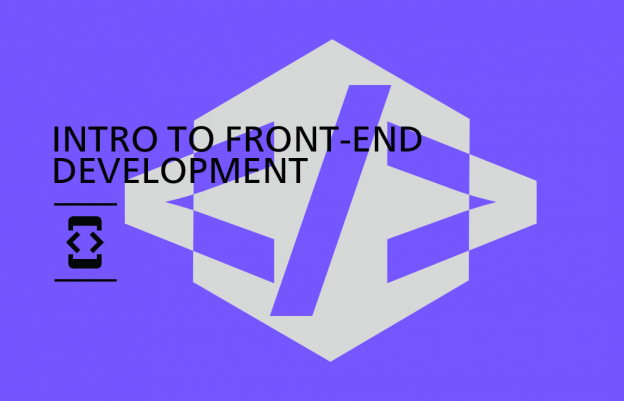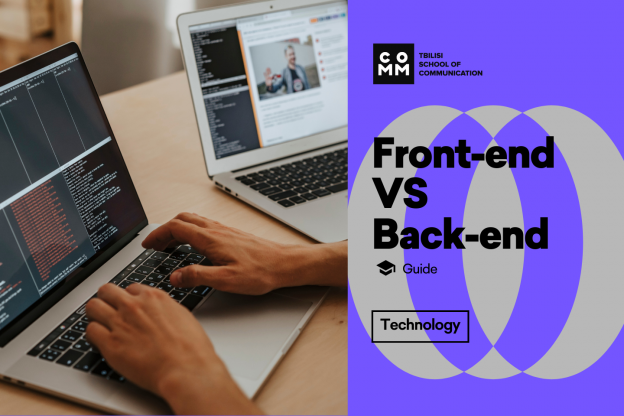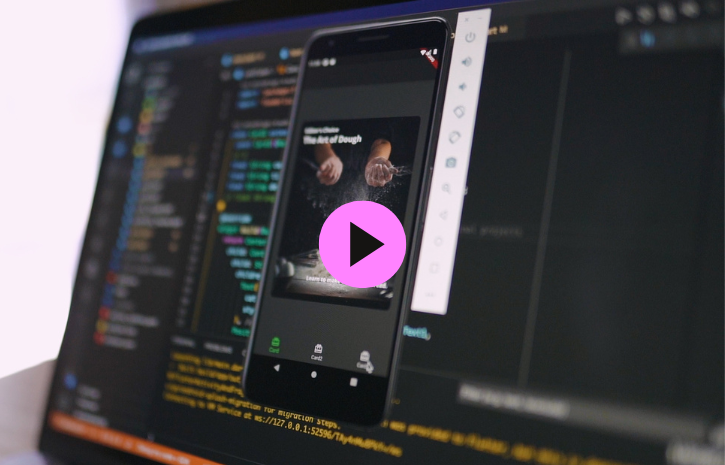
As mobile applications continue to gain popularity, the demand for cross-platform development solutions is on the rise. These solutions allow developers to create applications for multiple platforms using a single codebase. Flutter, one such cross-platform framework, has emerged as a leader in the field. According to LinkedIn, Flutter is the #1 software skill in demand, while Statista research ranks it as the top mobile framework with the highest market share.
Developed by Google, Flutter is a UI framework that enables the creation of mobile, web, and desktop applications for both Android and iOS platforms using a single codebase. Major companies such as Google, Alibaba, and eBay have adopted Flutter for their development needs.
Outcome
Skills Acquired: Dart, Flutter framework, OOP.
-
Write code independently using the Dart programming language
-
Create medium-sized applications using the Flutter framework
-
Effectively apply best practices and approaches in real-world development scenarios
Mon-Thur 20:00-23:00
Tue-Thur 20:00-23:00
 TBC installment
TBC installment
 BOG installment
BOG installment
Who is this course for?

Beginner programmers
For those who understand the meaning of OOP (classes, objects, methods, inheritance, abstraction, etc.) and want to pursue a career in mobile development.

Developers
For those who know any programming language and also for those who have worked with Android, IOS, React Native, Xamarin technologies and want to deepen their knowledge in the direction of Flutter.
Program includes
Alumni Club
Upon successful completion of the final exam, the graduate is automatically enrolled in the Alumni Club, and then gains access to exclusive events, content, and offers from our partner companies
Work Based Learning
The course includes practice-based learning, including assignments/exercises and individual projects.
Bilingual Certification
Upon successful completion of the course, students will receive a bilingual certificate.
Graduate feedback
Syllabus
Pick your suitable time
Lecturers
Natali Alibegashvili
Flutter
Natali Alibegashvili
Flutter
Natali has 5 years of experience in the programming field. During this time, she has held positions as a Unity Developer, Software Engineer, and Front-End Developer. She has collaborated with various Georgian and international companies and startups, such as Liberty Bank, Sparklab, Bonsters, Lomsa, VOIDA international, and others. Natali has created more than 7 applications using Flutter, and currently holds the position of Flutter Developer at Sociosoftware.

FAQs for this course
Your search Digital Designer did not match any documents
Unable to locate relevant information?
Get Free consultationYou may interest
Relevant Resources
Show MoreFront-end vs Back-end - A Guide to Web Development
When you search for something on Google, you get several choices as a result. With each click, these results change appearance according to our wishes, and we receive a beautiful, functionally sound feedback. We know these results as websites, and their creation is known as Web development. The term web development sounds familiar because it is one of the most trendy skills you can acquire in the IT field.Web development is one of the most important parts of IT because it creates a bridge between the user and the provider. Moreover, through functionality, it helps us automate complex tasks. Front-end and Back-end are integral parts of web development. What are these parts? How do they differ from each other? How much does the functioning of a website depend on them? Does one of them stand higher than the other? If you're interested in the answers to these questions, you've come to the right place, because in this blog you'll learn about the importance and functions of Front-end and Back-end. What is Front-end? As the name suggests, Front-end is what the user sees, connects with, and experiences. It mainly includes those parts of websites and applications that are visible to the user. The person who works on this is known as a Front-end Developer. The job of a Front-end developer is to create designs using user interface and experience. The primary skills of a Front-end developer include knowledge of HTML, CSS, JavaScript, as well as frameworks such as Angular JS, Node.js, etc. Along with this, experience in version control systems such as GIT and GITHUB is important. A Front-end developer is an integral part of web development because they ensure the creation of the necessary structure for the work to be performed. What is Back-end? Back-end development resembles the backstage of a movie or show. Actions performed by the user are analyzed and sent back through codes written by the back-end. The person who develops this is known as a Back-end Developer. The main work of a Back-end Developer involves connecting all aspects to databases and the Front-end. The primary skills of a Back-end Developer include knowledge of languages such as C#, Python, Java, Ruby, etc. Back-end is very important because it gives purpose and functionality to the beauty of an application or website. Characteristics of Front-end Along with a wide range of functions, Front-end has many characteristics: Client-side rendering: It allows developers to render the entire website on the user's browser using JavaScript. Server-side rendering: It makes it possible to visualize sites directly in users' browsers based on changes requested by the users themselves. Optimization: Refined adjustment of HTML, CSS, and JavaScript ensures fast loading of sites for users. Characteristics of Back-end Like Front-end, Back-end is also equipped with many functions that are useful for developers: Databases: Stores data needed for the user. Website architecture: It involves understanding the goals needed to create an application. Scripting: Involves correct formatting of the construction. API: Application Programming Interface or API are tools that involve communication between technologies and provision of necessary data. Front-end Development Languages HTML: Hypertext Markup Language or known as HTML, is a markup language used in building web pages. The language contains elements that provide the basic layout of the website. Along with giving structure to websites, it also displays images or visuals. Its advantages are: ease of use, support for multiple browsers, and combination with other languages. Its disadvantages are: static nature, security, and huge pile of codes.CSS: Cascading Style Sheets or CSS resembles the interior design of a website. CSS is simple because the language more or less includes basic English. Its advantages include multiple browser support, simplicity, and speed. Its disadvantages include cross-browser bugs and it's also tiring for beginners.JavaScript: JavaScript is the most important and popular language of Front-end development. It provides flexibility and responsiveness to the website. Advantages include: simple nature, speed, and additional or extended functionality such as creating dialog boxes, forms, pop-up windows, etc. Disadvantages are: difficulty in debugging and browser support. However, JavaScript is also used in the back-end.Elm: Elm is a simple language used to create fast and continuous websites.SASS: SASS is another scripting language like CSS. SASS has unique features that give users a seamless experience. Advantages include: reusability and clear codes. Disadvantages include: finding problems and solving them.jQuery: jQuery is a JavaScript library that enhances HTML event handling and animations. It's very concise and reduces the number of lines of written code. Front-end Frameworks Vue.js: This is a framework built around JavaScript and is used to create compact web applications.AngularJS: It's a web framework built around JavaScript. It provides features for HTML templates and increases performance.React: This is a popular JavaScript framework that enhances user interface components and provides a dynamic nature to web applications. Back-end Development Languages Python: Python is a widely used back-end development language. Its advantages are: huge collection of libraries, easy-to-read codes, integrations, versatility, etc.PHP: This is another widely used language in back-end development. Its features include: security, platform compatibility, object-oriented programming features, and integration with databases.Java: This is widely used to create Android and desktop applications. Its features include: automatic memory allocation, portability, and one-time compilation.Ruby: Ruby is a general-purpose language that has features such as a large standard library, flexibility, scalability, etc. Back-end Frameworks Django: ეს არის მაღალი დონის ვებ ჩარჩო, რომელსაც გააჩნია ჩაშენებული დანამატები. ის საუკეთესოა ფართომასშტაბიანი, მონაცემზე ორიენტირებული, ინტერაქტიული ვებ აპლიკაციებისთვის. თუმცა, ის არ არის რეკომენდებული მცირე ზომის პროექტებისთვის.Flask: Flask არის მიკროჩარჩო, რომელიც დაფუძნებულია პითონის ენაზე. მას არ სჭირდება ბიბლიოთეკები ან ხელსაწყოები და, შესაბამისად, შესაფერისია მცირე პროექტებისთვის.Ruby on Rails: Ruby on Rails არის ვებ აპლიკაციის ჩარჩო, რომელიც დაწერილია Ruby ენაზე. იგი გამოიყენება მონაცემთა ცხრილის უნაკლო ფორმირებისა და მიგრაციის შემუშავებაში. მარტივი შედგენა და ტესტირება მისი დამატებითი უპირატესობაა.CakePHP: CakePHP არის პოპულარული ვებ ჩარჩო PHP-სთვის. იგი გამოიყენება როგორც მცირე, ისე დიდი აპლიკაციების შემუშავებაში, რადგან უფრო ადვილია კონფიგურაცია და უზრუნველყოფს სრულ უსაფრთხოებას. განსხვავება Front-end და Back-end Development-ს შორის Django: This is a high-level web framework that has built-in add-ons. It's best for large-scale, data-oriented, interactive web applications. However, it's not recommended for small-scale projects.Flask: Flask is a micro-framework based on the Python language. It doesn't need libraries or tools and, therefore, is suitable for small projects.Ruby on Rails: Ruby on Rails is a web application framework written in Ruby. It's used in developing flawless data table formation and migration. Simple compilation and testing is its additional advantage. CakePHP: CakePHP is a popular web framework for PHP. It's used in developing both small and large applications because it's easier to configure and provides complete security.Difference between Front-end and Back-end Development Front-end is the interactive part of a website or application. The graphical user interface (GUI) allows users to perform actions according to their wishes. Users can see and connect with the Front-end. Users cannot see the backstage of the website or application, i.e., the Back-end. It collects information from users, processes it, and ensures the functioning of the application.A Front-end developer works on layout, while a back-end developer's job is to achieve the functional stage.Front-end developers should have an idea about Back-end. Thus, its development is not just about beauty. Although back-end development mainly concerns logic, calculations, servers, APIs, and testing, collaboration and data exchange between front and back developers is very important. So, as you can see, web development is an interesting field in the technology sector. Front-end Development resembles the exterior of a house; paint, wall carvings, wall hangers, or everything a person can see and feel. Back-end resembles the electrical supply, building materials that you can't see, but are crucial for the house. These two things together give an application the best appearance and functionality. Learn About commschool Courses
Data Engineering: Profession, Skills, Career Path
The vast amount of data is changing the principles of doing business and also creating a demand for data engineers who can collect, store, and sort it. It's expected that by 2025 we will produce 463 exabytes of data daily. Processing information of this scale will be impossible without industry specialists. Therefore, data engineering will become an important part of future global changes. If you work in programming and want to be part of a challenging process, read the blog and find out what opportunities data engineering offers. What does data engineering involve? Data engineers work on designing and creating systems that collect, process, and transform primary data into usable information for data scientists and business analysts. Their main goal is to make data accessible in such a way that the organization can use it to evaluate and optimize business.This is an incomplete list of responsibilities you might have when working with data:Collecting databases that relate to business needsDeveloping algorithms that transform data into practical informationBuilding, testing, and maintaining the system architecture of databasesCollaborating with managers to understand company goalsCreating new methods and tools for data validation and analysisEnsuring compliance with data management and security policies Why should you choose data engineering? Working in this field is both enjoyable and challenging. You will play an important role in the company's success. You achieve this by making data easily accessible to data scientists, analysts, and decision-makers. They need this information in their daily activities. For this, you will need programming and problem-solving skills. As long as data exists, there will be a demand for data engineers. Moreover, according to a 2019 study, data engineering is the trendiest job in the technology industry. It leaves behind computer scientists, web designers, and database architects In addition, data engineering is a high-paying profession - according to 2022 statistics, the average income in the US is $115,176.To become a successful data engineer, it's desirable to have relevant knowledge and skills in computer science. This will create the foundation needed in this rapidly developing field. If you have a bachelor's degree in computer science, then you can study data engineering at the master's level. However, it's possible to master this profession without continuing studies in higher education institutions. For this, 4 stages need to be passed: Develop skills needed for data engineering At the initial stage of your career in data science, learn the basics of cloud computing, coding, and database design. Specifically:Collecting databases that relate to business needsDeveloping algorithms that transform data into practical informationBuilding, testing, and maintaining the system architecture of databasesCollaborating with managers to understand company goalsCreating new methods and tools for data validation and analysisEnsuring compliance with data management and security policiesWhy should you choose data engineering? Working in this field is both enjoyable and challenging. You will play an important role in the company's success. You achieve this by making data easily accessible to data scientists, analysts, and decision-makers. They need this information in their daily activities. For this, you will need programming and problem-solving skills.As long as data exists, there will be a demand for data engineers. Moreover, according to a 2019 study, data engineering is the trendiest job in the technology industry. It leaves behind computer scientists, web designers, and database architects.In addition, data engineering is a high-paying profession - according to 2022 statistics, the average income in the US is $115,176.To become a successful data engineer, it's desirable to have relevant knowledge and skills in computer science. This will create the foundation needed in this rapidly developing field. If you have a bachelor's degree in computer science, then you can study data engineering at the master's level. However, it's possible to master this profession without continuing studies in higher education institutions. For this, 4 stages need to be passed:Develop skills needed for data engineering At the initial stage of your career in data science, learn the basics of cloud computing, coding, and database design. Specifically:Coding: Programming languages are essential for data engineering. Therefore, be sure to learn and develop coding skills. Useful programming languages in this field are SQL, NoSQL, Python, Java R, and Scala.Databases: They are most often used when solving data storage problems. Accordingly, you should be well acquainted with its working principles.ETL (Extract, Transform, Load) systems: This is the process when you transfer data from databases and other sources to one repository, for example, a Data Warehouse. The following tools are used for this: Xplenty, Stitch, Alooma, Talend.Data storage: Not all types of data are stored in the same way, especially when it comes to large amounts of data. When working on solving this problem for a company, you need to understand well, for example, when to use a Data Lake and when to use a Data Warehouse.Automation and scheduling: Automation is an essential part when working with a large database, for which you should be able to write a plan to perform repetitive tasks automatically.Machine learning: This topic is of interest to data science, but it will help you understand the basic principles. It will also show you the need for specialists in this field in the team.Big data tools: Data engineers mostly have to work with large amounts of data. Tools and technologies are constantly evolving. Among them, the most popular are Hadoop, MongoDB, Kafka.Cloud computing: Today, companies are replacing physical servers with cloud services. Therefore, studying this issue well will definitely be useful.Data security: Data engineers often have to work on securely storing data and protecting it. Accordingly, this skill will be needed in daily activities. Take a data engineering course Obtaining a certificate will be proof of your skills to employers. Therefore, study data engineering in a certified course and gain relevant knowledge and practical experience. This will help you refine and improve the necessary skills.Here I'll also tell you new news - you can now study data engineering at Commschool! If you know the Python programming language, then this program will interest you. Together with a professional lecturer in the field, you will learn to use key technologies and tools for data engineering, design web services for data, and various Python libraries. So, be sure to check out the course syllabus. Data Engineering 33 Lecture/ 99 Hour / 17 Week Learn More Create a portfolio In the job search process, a portfolio is often a decisive component, as it best shows your capabilities Therefore, create a web page portfolio of data engineering projects that you have completed independently or as a final course assignment. Place them on your LinkedIn profile or GitHub. tart working in an entry-level position Many data engineers start their careers in entry-level positions such as business analyst or database administrator. When you gain experience, acquire new knowledge and skills, you can also get employed in higher positions. Thus, if you see yourself in this field, take this opportunity and start learning data engineering at Commschool! Join Us
5 Reasons Why You Should Become a Back-end Developer
Maybe you're thinking and thinking, and you're finding it hard to decide if you want to learn Web Development? Or you've already had some contact with it, but you're still not sure if you want to deepen this knowledge? Let me tell you about one of our courses while you're hesitating, maybe I can help you make a decision. Web development is becoming more and more important and in demand. Back-End, also known as Server Side development, is an integral part of Web development... Arthur Zakharyan, Lecturer The Introduction to Programming course covers learning Back-End from scratch, along with aspects such as Computer Science basics, databases, necessary tools, and more I also want you to know that the share of vacancies announced for Back-End developer positions in Georgia is 66% and their average monthly salary is 3500 GEL. The profession is also flexible, you can work remotely on various freelance projects and gain experience with the help of the largest platforms such as: Toptal, Upwork, Freelancer, and others. I also want you to know that the share of vacancies announced for Back-End developer positions in Georgia is 66% and their average monthly salary is 3500 GEL. The profession is also flexible, you can work remotely on various freelance projects and gain experience with the help of the largest platforms such as: Toptal, Upwork, Freelancer, and others. To return to the course, you'll go through the program based on C#. A little about C#: C# is the N2 top programming language according to Stack Overflow's survey, which Software developers use most often in Back End. According to the same survey, C# developers are also among the highest-paid professionals in the world. With C#, specifically with the help of the .NET platform, many Enterprise-level applications are created today. Microsoft stands behind .NET. Such well-known products as Stack Overflow, UPS website, and others are created on them. The course is led by Arthur Zakharyan, who has 4 years of experience in WEB Development and holds the position of .Net developer at DataArt. He has also collaborated with TBC Pay and Credo Bank. During the course, I will share with students the knowledge I have accumulated, both in theory and practice. We will get acquainted with the basics of programming, design patterns, and also different types of programming paradigms. During the program, we will also have contact with databases. More specifically, after completing the course, you will be able to: Apply computer science theory in practice Apply Software Development basics in practice Use C# programming language independently and work with databases independently Use Git, which is an integral part of development today Create small/medium sized applications independently on .Net 5 Use Microsoft Visual Studio and Microsoft Visual Studio Code Create and work with WEB API Choose the best approaches and standards when developing an application Don't forget, you'll be able to do all this when you enroll in the course, and you don't need any prior knowledge for this, you start everything from scratch. The only thing you'll need is just diligence, dedication, curiosity, and a lot, a lot of patience. Mastering the rest of the Hard skills, such as algorithms and data structures, programming basics, is only a result of time, practice, and a lot of exercise. After successfully completing the course, a bilingual certificate and support in career development is on us. I remind you that Commschool has an Alumni Club, in which you will automatically enroll upon successful completion of the course. The club ensures to promote your future career development, helps you receive exclusive job opportunities and internships in partner companies. So, what do you think? I'll also tell you that Introduction to Programming has one interesting condition: The N1 graduate gets their tuition fee fully refunded! If you're interested in Back End Development and want to develop in this direction, follow this link https://youtu.be/7fsXgyIlwKU Join Us
 Intermediate
Intermediate  Live-online
Live-online

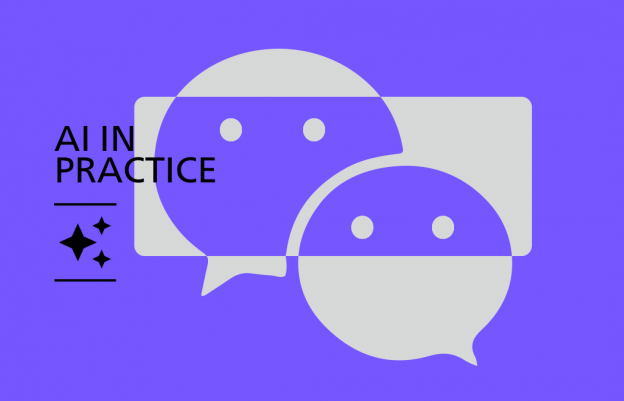
 Beginner
Beginner 
